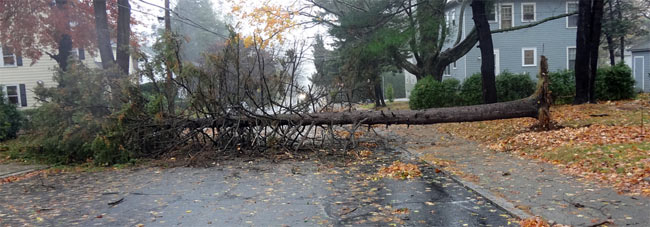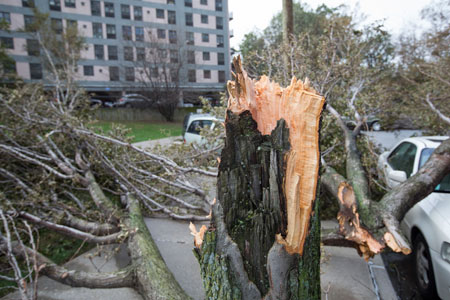In the wake of Hurricane Sandy, assessing the damage has become a priority. After a storm in which millions of people lost power and the streets of New York and New Jersey were shut down, it is clear that much of the East Coast has seen significant destruction. It can be difficult to quantify the losses, as many cities are continuing relief efforts. But arborists and urban foresters are beginning to tally the number of fallen trees and evaluate their respective city’s position.

Falling trees are one of the major dangers facing urban and suburban areas during a natural disaster. You have probably heard stories of trees damaging the infrastructure of cities and towns on the East Coast. After the worst of Sandy’s effects, The New York City Department of Parks and Recreation reported that two-thirds of service requests were related to felled trees. But many experts are concerned with the damage to the tree canopy and urban forests initiatives.
American Forests, and specifically our Urban Forests program, stresses the importance of trees, gardens and other green landscapes in cities. These cities employ a variety of experts in order to maintain a healthy recreation environment for citizens, as well as habitats for urban wildlife. But trees, in particular, provide shade, reduce stormwater runoff and capture rainfall. This makes them essential to sustainable living in cities and important to consider during times of crisis.
In the hardest-hit cities — such as New York — there has been little focus on urban forest plans and setbacks, as is fitting considering officials in these communities are continuing to focus on relief and clean-up. But further south, in cities such as Baltimore and Washington, D.C., officials are already counting their losses and predicting schedule changes in order to accomplish their goals.

According to an article by E&E News, Washington, D.C. — which saw its second major canopy threat in a year after June’s derecho — lost 224 of its 140,000 trees. Sandy did not match the destruction of this summer’s storm, but it did leave notable gaps in the city’s urban forest work. Baltimore is facing a greater setback with 500 felled trees and long-term goals looming. By 2040, this city hopes to reach 40 percent canopy cover. There have been 9,000 trees planted in Baltimore this year, but after Sandy this smaller net gain leaves them struggling to stay on pace with their goal.
Even in cities like New York, where tree experts are primarily concerned with clearing the streets, it is clear that the urban forest canopy was affected. The New York Botanical Garden suffered 100 felled trees, many of which were ancient oaks. Boston, another city where official numbers have not been tallied, is planning to have to play catch-up in order to reach its goal of 100,000 more trees by 2020.
As city employees continue recovery efforts, it is important to appreciate those who are working to stay on track in order to maintain urban forest goals. But natural disasters like this one also provide lessons for the future. American Forests is a strong advocate for trees in cities, but in order for them to be effective and not destructive, it’s imperative to choose the right tree for the right space and to make sure sufficient funding and staff are available for necessary pruning and maintenance. Storms and trees are always going to have a tenuous relationship, but devastation can be minimized with proactive actions and cooperative efforts.
For more on how to help urban forests weather storms, read American Forests’ urban forests director’s previous blog post on the subject.